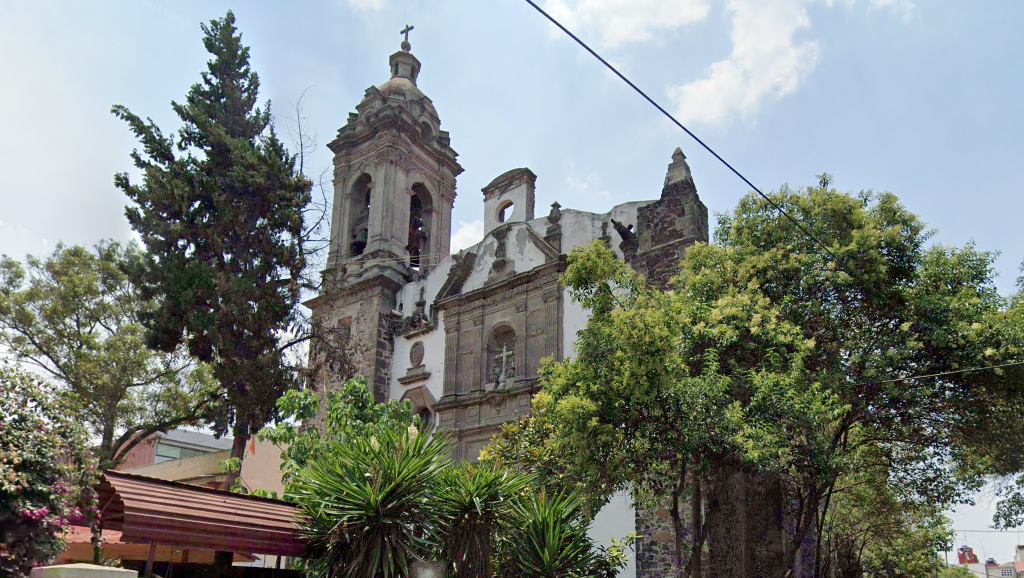
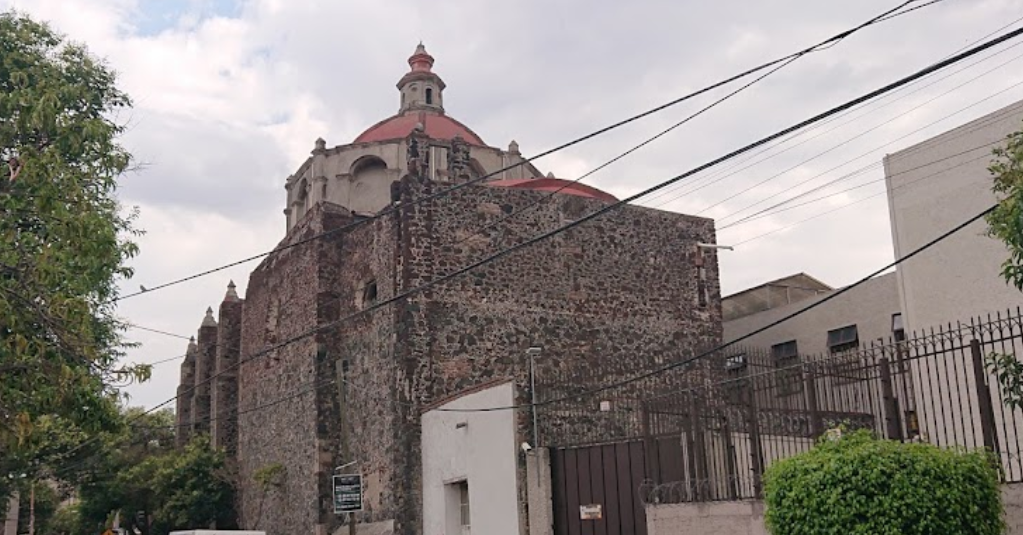
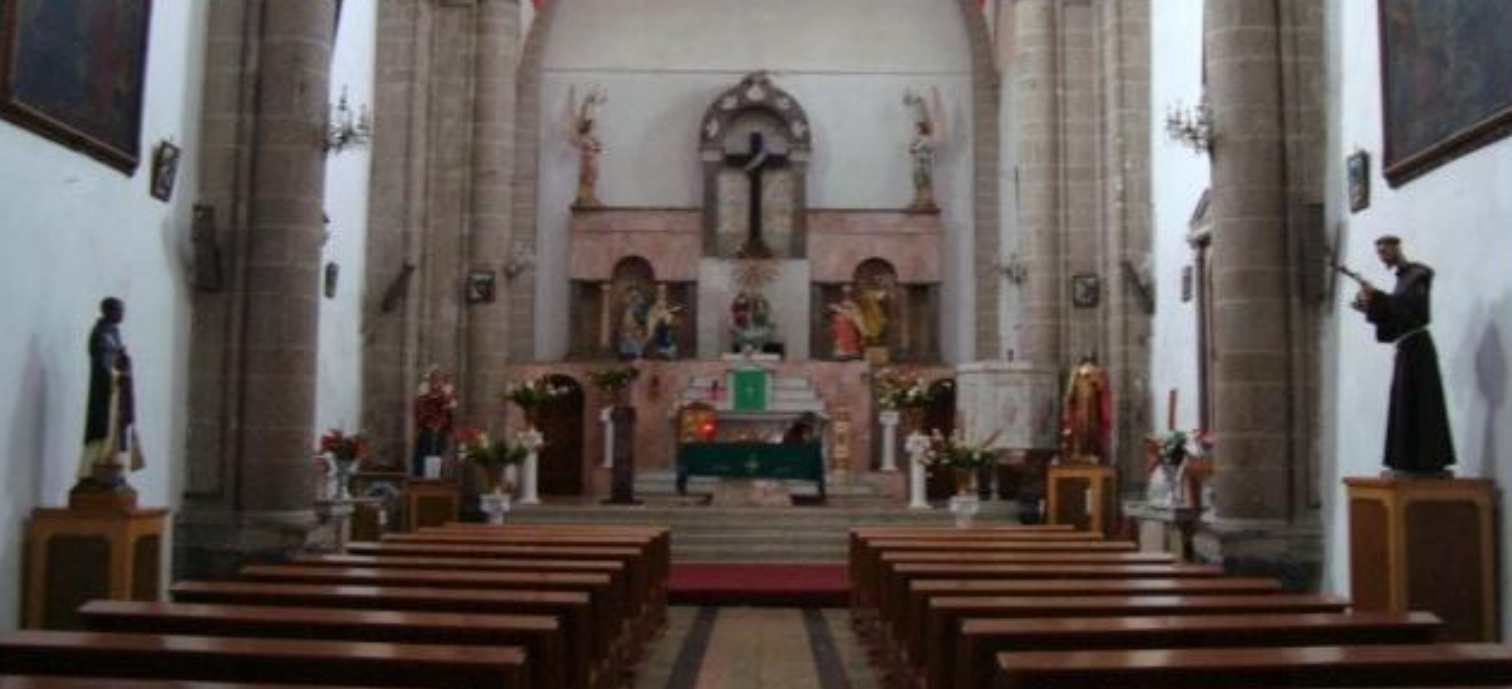
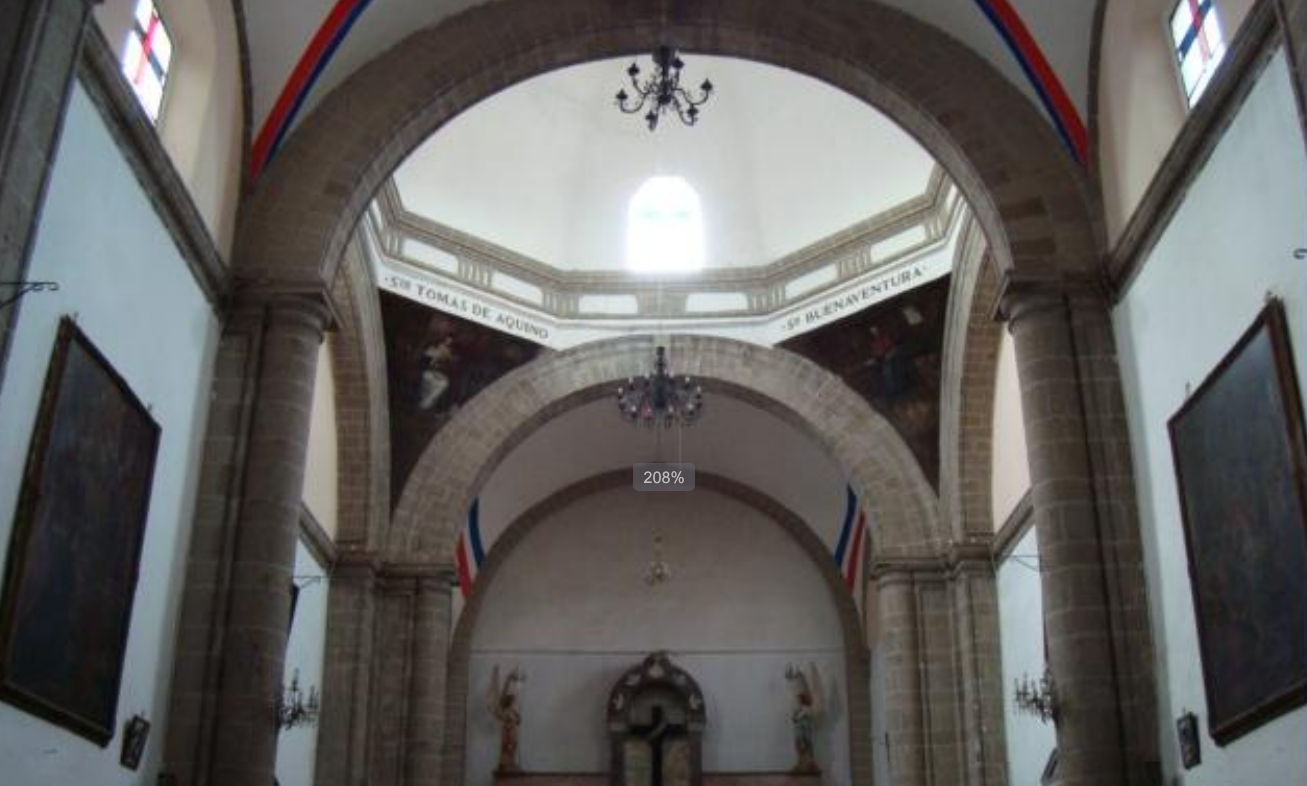
Photos: Catedrales e Iglesias/Cathedrals and Churches, Attribution 2.0 Generic
Santa Cruz Acatlán is a tiny old neighborhood center just beyond the Chimalpopoca Canal which marked the traditional southern edge of the island of Tenochtitlan. The ancient community bore the distinction of being among a few places where the Mexica were said to have witnessed the eagle on the nopal cactus. That legendary sighting then led to the founding of ancient Tenochtitlan.
Ancient Acatlán was part of the Zoquiapan (southeastern) section of the ancient capital. The indigenous neighborhood prior to the church was called Xochiatlán. The Nahuatl name probably refers to the hue (pinkish) of the shallow lake water in the area. The name is thought to have been later shortened to Acatlán. The town passed under the administration of the San Pablo monastery and was only later re-dedicated to Santa Cruz.
The dedication is said to derive from a cross erected in the old town of San Antonio Abad. That much bigger monastery is on the other side of the neighborhood and a ruin today. The franciscans dedicated that complex to Saint Anthony of Padua. In 1772, the bishop removed the parish from the control of the Franciscan order. It became a regular parish, one of 13 in the colonial capital. The Baroque church we see today dates from the late 17th century, nearly 100 years prior to its elevation to a parish. Documentary evidence records an earlier church begun here in 1637.
The colonial town was long known as Santa Cruz de los Rastreros, that is, for the slaughterhouse (rastro) workers. The city stockyards here took advantage of livestock driven up the Calzada de Tlalpan to the San Antonio Abad area and up to the area of today’s Plaza de San Lucas. And this later gave way to the tanneries, textile factories, tile, and tobacco interests that lasted well into the 20th century.
The modern Tránsito neighborhood bears the named of housing units built in the late 1930s. These housed the Cooperative Society of Construction and Consumption workers known also as Tránsito. This was during the Lázaro Cárdenas administration.
It’s perhaps obviously, some of the oldest continually inhabited territory outside of the formal city center. But the neighborhood also benefits from the encroachment of the clothing merchants who often line the streets leading down and away from the Pino Suarez area to the north.
Nearest at 0.20 kms.
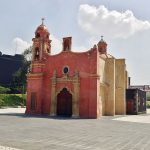
Nearest at 0.26 kms.

Nearest at 0.36 kms.
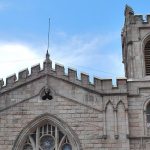
A historic Methodist church on the Avenida Balderas . . .
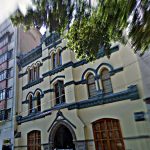
A historic Methodist church in the old grand cloister of San Francisco . . .
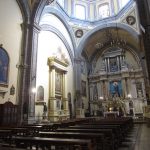
The first target of the counter-reformational Academy of Art . . .

The old church of an important early Dominican convent in the Historic Center...
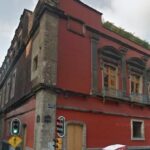
A grand 16th-century school lives on as an events venue and historic monument...